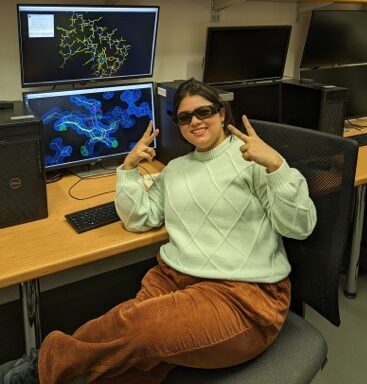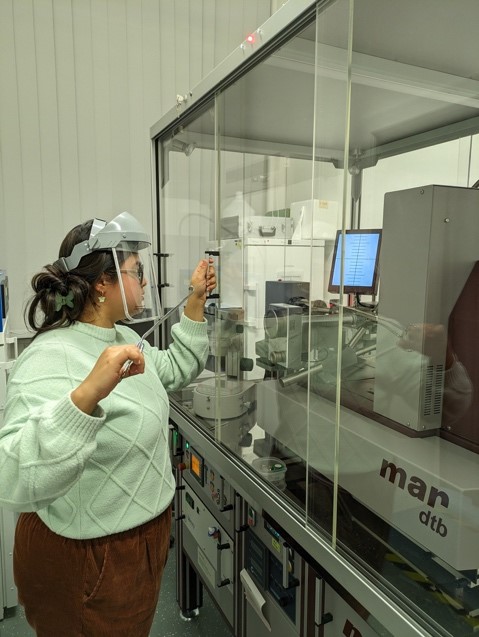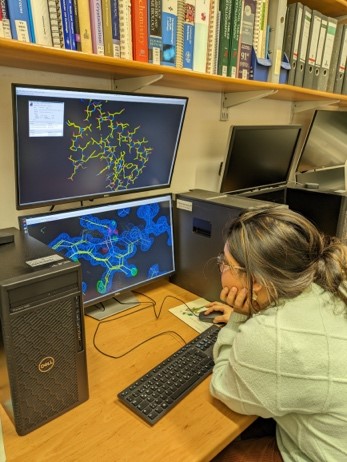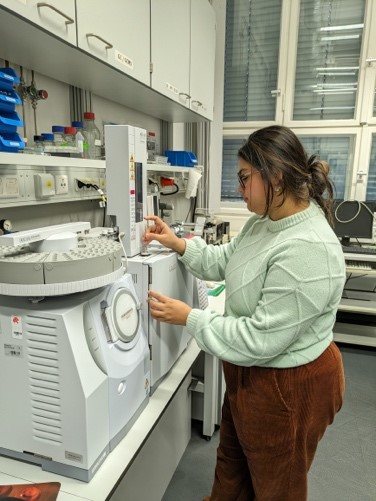 Anushka is the newest member of our team and just took over curating our social media accounts. She grew up and did her undergraduate studies in Kolkata, India where she went to a typically Indian all-girls catholic convent school before joining an integrated master’s course in biotechnology at St. Xavier’s College. After that, she decided to move to Berlin for her PhD studies and joined the group of Holger Dobbek at Humboldt-University.
Anushka is the newest member of our team and just took over curating our social media accounts. She grew up and did her undergraduate studies in Kolkata, India where she went to a typically Indian all-girls catholic convent school before joining an integrated master’s course in biotechnology at St. Xavier’s College. After that, she decided to move to Berlin for her PhD studies and joined the group of Holger Dobbek at Humboldt-University.
Anushka, you are (sadly) the only structural biologist in our team. Could you tell us what your research is about?
Structural biologists in the simplest of forms use X-ray crystallography, Cryo-EM, NMR spectroscopy or other methods to solve the structures of biological materials such as proteins, viruses, and glycolipids. In my work, I use X-ray crystallography and Resonance Raman spectroscopy to make a better catalyst for CO2 reduction (go away Global Warming!). It involves making changes in the protein sequence or cofactor to change enzyme activity. I am also always very astonished by all the varied applications of X-ray crystallography in my (protein)domain.
What made you choose this direction?
My master’s course in biotechnology was very multidisciplinary and intense and provided exposure to more subjects than I would have liked. We learned about microbiology, physics, and everything in between. However, in my 8th semester, we were introduced to X-ray crystallography, which fascinated me just as much then as it does now. In specific, Gale Rhodes’ book “Crystallography Made Crystal Clear” introduced some arduous concepts in an easy-to-understand and accessible manner, injecting humour and everyday anecdotes in a way that made me want to be a structural biologist.
After that, I pretty much just waited for the last semester, when I could finally get some hands-on experience. While doing my Master’s thesis, I learnt the ropes of recombinant protein expression and purification, followed by crystallization of said protein. I found myself looking forward to my days in the laboratory, despite some of them frequently running 9-12 hours long.
Would you tell us, why you decided to move to Germany?
I knew I wanted to go forward with a PhD right after finishing my master’s degree. Since I had never lived in another city or country, without my family, I wanted to do it while expanding my personal boundaries of independence and individual growth.
I applied to many Universities outside my home country and received way more rejections than acceptances. Among the places I was accepted to, Berlin seemed like the best option, having a wide network of eminent scientists and world-renowned institutes in my field while also welcoming foreigners with open arms. One-and-a-half years later I have never had to rethink my choice.
What does your typical working day look like?
Now to the fun part: I am and have always been extremely curious even to the point of being (politely) nosy. I always wonder what the day-to-day of a scientist looks like. If you also feel the same, here’s a small glimpse of my every day! (All the photos are 100% natural, I’m not at all close to laughing. Never.)




